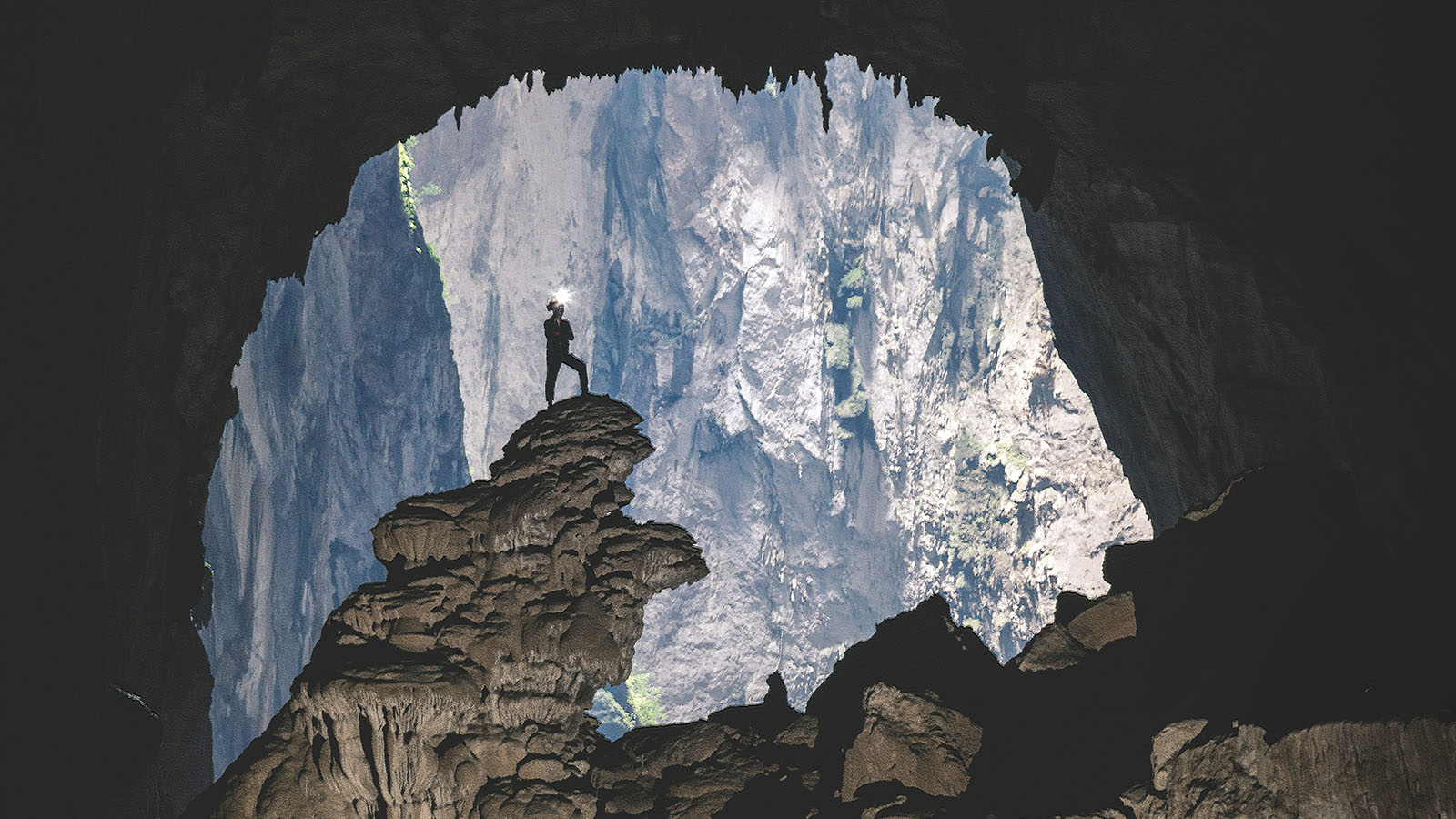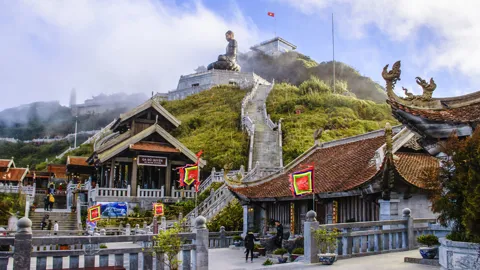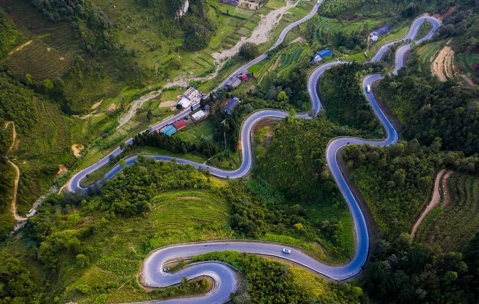Map of Ha Giang: Vietnam’s Northern Frontier of Surreal Beauty and Raw Adventure
Tucked away in the northernmost reaches of Vietnam, Ha Giang has quietly transformed from a remote frontier into a must-visit destination for thrill-seekers and nature lovers alike. In recent years, the Ha Giang Loop has exploded in popularity, capturing hearts and headlines across blogs, TikTok, YouTube, and travel forums. With its dizzying mountain passes, mist-veiled peaks, and remote ethnic villages, this breathtaking motorbike journey offers not just views—but emotions. The map of Ha Giang isn’t just a guide; it’s a promise of discovery, adrenaline, and cultural immersion. Whether you’re chasing clouds or chasing freedom, this rugged corner of Vietnam delivers a surreal experience that words can barely contain. Get ready to ride through landscapes so stunning they might just make you cry.
Where Is Ha Giang?
Positioned in Vietnam’s far north, Ha Giang Province borders China’s Yunnan Province and lies about 300 kilometers from Hanoi. Despite its remoteness, Ha Giang has emerged as a favorite for nature lovers and cultural explorers seeking something raw and authentic. The province sits within the Northeast region and offers a landscape defined by limestone mountains, deep valleys, and ethnic highland villages.
Here are some key geographical facts about Ha Giang:
Total area: approximately 7,900 km²
Population: around 900,000 people (as of the latest census)
Topography: mountainous terrain with karst plateaus, deep valleys, and river basins
Borders: shares an international boundary with Yunnan Province, China
Region: Northeast Vietnam
Administratively, Ha Giang is divided into:
1 provincial city: Ha Giang City
10 rural districts: Dong Van, Meo Vac, Quan Ba, Yen Minh, Bac Me, Bac Quang, Hoang Su Phi, Xin Man, Vi Xuyen, and Quang Binh.
A Glimpse Into Ha Giang’s History and Culture
As Vietnam’s northernmost province, Ha Giang is more than just mountains — it’s a living museum of ethnic heritage and borderland history. Here’s a snapshot of what makes its culture so captivating:
Ethnic Diversity
Ha Giang is one of the most ethnically diverse provinces in Vietnam, home to over 17 ethnic groups whose cultures have thrived for centuries in its mountainous landscape. Unlike lowland communities, these highland peoples maintain ways of life that are deeply tied to the land, seasons, and ancestral customs. The variety here isn’t just about language or dress—it’s about worldview, spirituality, and survival in a rugged terrain.
Some of the most prominent ethnic groups include:
H’Mong: The largest group, especially in Dong Van and Meo Vac. Known for indigo-dyed outfits, silver jewelry, and expertise in hemp weaving and herbal medicine.
Lo Lo: Mostly in Lung Cu, they wear brightly embroidered costumes and perform unique drum dances and fire rituals.
Dao (Yao): Recognized by their shaved foreheads and red scarves. Skilled in forest medicine and ancient spiritual texts.
Tay & Nung: Living in lower valleys, they build stilt houses and farm rice. Their folklore and music resemble lowland Northern traditions.
Pa Then: A rare group known for their dramatic fire-jumping festival—a bold ritual held in winter nights.
Culture & Daily Life in Ha Giang
Life in Ha Giang’s highlands flows to the rhythm of seasons, markets, and age-old traditions passed down through generations. Here’s a glimpse into the cultural heartbeat of this mountainous land:
Trình tường houses: Traditional rammed-earth homes that stay cool in summer, warm in winter—common in H’Mong and Dao villages.
Highland markets: Held every 5 or 6 days, these markets are not just for trade, but for socializing, matchmaking, and cultural exchange. Meo Vac and Yen Minh host some of the most lively ones.
Lũng Cú Flag Tower: Marking Vietnam’s northernmost point, this towering national symbol holds deep cultural and political significance. More than a sightseeing spot, it represents identity, pride, and the spiritual edge of the Vietnamese homeland—making it a cultural landmark rather than just a tourist attraction.
Khau Vai Love Market (once a year): A unique gathering where former lovers reunite freely, rooted in a romantic legend of forbidden love.
Swing Festival (H’Mong): Girls in colorful skirts play on giant wooden swings, symbolizing vitality and love during springtime.
Gau Tao Festival (H’Mong): A New Year celebration of singing, dancing, and games to pray for prosperity and happiness.
New Rice Festival (Tay & Dao): Held after the first harvest to thank the land and ancestors, featuring food offerings and community feasts.
Fire-jumping Festival of the Pa Then (winter): Young men leap over sacred flames in a spiritual ritual of courage and connection to the spirit world.
These customs and events offer rare windows into ethnic identity and rural life—each one a reason to linger longer in Ha Giang.
Best Time to Visit Ha Giang: Weather & Seasonal Highlights
Unlike much of Vietnam, Ha Giang enjoys a cool, temperate climate all year round—thanks to its elevation and mountainous terrain. But that doesn’t mean the weather is predictable. The region experiences two main seasons: a dry season (October to April) and a rainy season (May to September).
Each time of year brings its own unique charm, so your experience can shift dramatically depending on when you go. Here’s a seasonal breakdown to help you plan:
Month-by-Month Highlights
March – April: Spring brings peach, plum, and pear blossoms blanketing the hillsides. Ethnic festivals light up the villages with color and music.
September: The golden rice terraces of Hoang Su Phi reach their full glow—perfect for photography, hiking, or simply soaking in the scenery.
October – November: Buckwheat flower season arrives, turning the valleys into soft pink carpets. It’s peak “Instagram season,” but still less crowded than Sapa.
December – January: Mist drapes the mountains and creates a dreamy, mysterious landscape. It’s chilly, quiet, and utterly poetic—ideal for those seeking peace.
May – August (rainy season): Lush greenery takes over, waterfalls swell, and the air feels tropical. But beware of slippery roads—especially if you’re planning to ride the Ha Giang Loop.
Top Tourist Attractions: What to See & What to Do in Ha Giang
The Ha Giang Loop: A Road That Changes You
For many travelers, the Ha Giang Loop is more than just a scenic motorbike trip—it’s a journey that stirs something deep inside.
Before the loop, most visitors arrive with excitement but also a little anxiety: “Will I make it through the curves?”, “What if it rains?”, “Can I ride a motorbike that far?” But once they set off—past sky-high passes, mist-wrapped villages, and winding roads clinging to mountain edges—something changes. Fear melts into awe. Hesitation gives way to flow.
What makes the Loop unforgettable isn’t just the jaw-dropping views—like Ma Pi Leng Pass towering above the Nho Que River—or the thrill of the ride. It’s the unexpected warmth of the H’Mong grandmother offering tea in a remote village. It’s the silence between canyons. It’s the moment you stop on the side of the road—not to take a photo—but just to breathe and take it all in.
At the end of the loop, many travelers describe a mix of exhaustion, clarity, and strange tenderness. You don’t just complete the Loop—you come back lighter, braver, more alive.
Ma Pi Leng Pass
Known as Vietnam’s most dramatic mountain pass, Ma Pi Leng stuns with its sheer cliffs and sweeping views of the Nho Que River below. Brave the Skywalk trail or pull over and simply breathe—few places offer such raw, unfiltered beauty. The silence here echoes louder than any words.
Dong Van Old Quarter
Nestled between rocky slopes, this heritage town is a charming blend of French colonial houses and ethnic life. On Sundays, the old streets burst into color as H’Mong, Tay, and Lo Lo people gather for the highland market. It’s the perfect place to sip corn wine and watch culture come alive.
Tay Con Linh Peak
At over 2,400 meters, Tay Con Linh is the roof of Northeast Vietnam—sacred to many ethnic groups. Trekkers who rise before dawn are rewarded with a sea of clouds and golden light. Hire a local guide for multi-day hikes through misty forests, medicinal herbs, and mossy trails.
Tham Ma Pass
This iconic S-shaped mountain road snakes steeply between Yen Minh and Dong Van. Once used to test the strength of horses, it now tests the nerves of riders. Conquering each curve by motorbike, cheered on by roadside vendors, is a rite of passage on the Ha Giang Loop.
Nho Que River
Winding gracefully beneath Ma Pi Leng Pass, the Nho Que River glows turquoise in the sun. Board a traditional wooden boat to drift into Tu San Canyon—the deepest gorge in Southeast Asia. Along the way, listen to stories of life on the riverbanks from local boatmen.
Hoang Su Phi Terraces
Terraced rice fields cascade down the mountains like green silk ribbons. Come in autumn to witness the golden harvest, or trek in spring when new shoots create a luminous green glow. Stay overnight in a Dao or Nung village and experience rural life firsthand.
Sung La Valley
Tucked between limestone peaks, Sung La is famed for its quiet beauty and scenes from the film The Story of Pao. Traditional H’Mong homes, buckwheat flowers, and slow village rhythms make this the perfect stop for walking, storytelling, or simply watching the wind move through the hills.
Noong Lake
Located in Phu Linh commune, Noong Lake is a tranquil oasis surrounded by dense forest and stilt houses. Its water level shifts with the seasons, revealing hidden tree trunks and birdlife. Rent a dugout canoe, fish with Tay locals, or picnic along the shore in peace.
Lung Khuy Cave
Only recently discovered, Lung Khuy Cave reveals a secret underground world of glistening stalactites. The hike to the cave winds through pine forests and H’Mong villages, making the journey just as memorable as the destination. Bring a flashlight—and a sense of wonder.
Yen Minh Pine Forest
Blanketing the hills like a green wave, the pine forest near Yen Minh offers a cool, quiet escape from rocky mountain roads. It’s an ideal spot to stretch your legs, breathe in fresh resin-scented air, or enjoy a breezy picnic under swaying treetops.
Lung Cu Flag Tower
Standing tall at Vietnam’s northernmost tip, the Lung Cu Flag Tower is more than a viewpoint—it’s a national symbol of pride and sovereignty. Climb the final stairs to touch the base of the giant red flag, and gaze across terraced hills toward China’s border. The feeling? Quiet, powerful, unforgettable.
Pao’s House
Hidden in Sung La Valley, this humble earthen home became famous as the setting for the award-winning film The Story of Pao. Surrounded by stone fences, blooming buckwheat, and soft mountain light, it invites quiet reflection. Come in spring to walk the flowered paths and feel like part of a poem.
Lo Lo Chai Village
Just steps away from Lung Cu Tower, Lo Lo Chai offers a vibrant window into the life of the Lo Lo people. Explore narrow lanes of tiled-roof homes, watch women hand-embroider dazzling costumes, and sip coffee brewed over wood fires. A peaceful cultural gem where time slows to a gentle rhythm.
Must-Try Local Dishes in Ha Giang
Beyond the winding roads and towering peaks, Ha Giang’s flavors are equally unforgettable. From humble highland stews to nutty cakes made from buckwheat flowers, the province’s cuisine reflects its rugged climate, ethnic diversity, and deep connection to the land.
Thắng Cố (Horse Meat Soup)
A traditional H’Mong dish often served at markets and festivals, thắng cố is a bubbling stew made from horse meat and offal, simmered with more than 10 forest spices. Its aroma is strong, the taste—an acquired one. But once you try it with corn wine, you’ll understand why it’s a highland staple.
Cháo Ấu Tẩu (Au Tau Porridge)
Warm, thick, and slightly bitter, this porridge is made from toxic “au tau” roots that are carefully detoxed overnight. Mixed with glutinous rice, pork, and herbs, it’s served late at night to warm cold bones and tired travelers. Locals swear by it as a cure-all for fatigue.
Phở Chua (Sour Pho)
Forget the broth-heavy version of Hanoi—Ha Giang’s pho chua is dry and tangy, made with rice noodles, crunchy peanuts, pickled veggies, and a sweet-sour sauce. Often eaten cold in the summer, it’s refreshing, surprising, and perfect after a long ride on the Loop.
Bánh Tam Giác Mạch (Buckwheat Cake)
Made from finely ground buckwheat flour and steamed until soft, these purple-grey cakes carry a mild nutty sweetness. Enjoy them warm from a roadside stall, often served with sesame or dipped in honey. A perfect snack while wandering highland villages in bloom.
Thịt Trâu Gác Bếp (Smoked Buffalo Meat)
Salted, marinated, and slow-smoked above kitchen fires, this chewy delicacy is a prized H’Mong specialty. Its deep umami and smoky aroma make it a popular gift—but the best way to eat it is fresh off the hearth with a glass of corn wine and good company.
Rượu Ngô (Corn Wine)
Don’t underestimate this highland liquor—it’s strong, fragrant, and deeply rooted in hospitality. Brewed from corn and forest herbs, it’s offered to guests in bamboo cups, often with a toast and a smile. Sip slowly… or prepare to sing karaoke with the village chief.
Essential Travel Tips for Ha Giang
From emerald rice terraces to cloud-hugging passes, Ha Giang is Vietnam’s final frontier—and one of its most rewarding. Whether you’re a laid-back explorer or a thrill-seeker gearing up for the legendary Ha Giang Loop, these essential tips will help you get the most out of your journey.
Best Time to Visit
March–May: Buckwheat and plum blossoms, cool breezes, and clearer skies.
September–November: Golden rice harvests and crisp air—perfect for photos and long rides.
June–August: Rainy season—lush but slippery, especially for motorbikes on the Loop.
Tip for Loop riders: Morning fog can be thick in high passes—plan early departures and slow down on descents.
Getting There & Around
Most travelers take a sleeper bus from Hanoi to Ha Giang City (6–7 hours). From there:
Rent a motorbike to ride the Loop
Book a car and driver if you prefer comfort
Join a guided Loop tour (on motorbike or by Jeep)
Loop-specific tip: Many bike rental shops offer free overnight buses + permit assistance + gear packages.
Where to Stay
In Ha Giang City: Budget hotels and hostels, ideal for prepping your trip.
Along the Loop: Homestays in Quan Ba, Yen Minh, Dong Van, Meo Vac, and Du Gia offer cultural immersion and warm meals.
Pro tip: Book your first night’s homestay in advance, then go with the flow based on your energy and weather.
Border Permits
All foreign travelers need a border permit to visit areas near China, including Dong Van and Lung Cu. Get one in Ha Giang City (Police Station or via your rental shop)
Cost: ~10 USD
Valid for the entire Loop
Don’t skip this: You might be asked for it at police checkpoints, especially on the Loop.
What to Pack
Waterproof jacket & gloves (rain can hit anytime)
Solid walking shoes or boots
Action camera (GoPro or similar)
Power bank, offline maps (Maps.me, Google Maps download)
Basic meds (altitude fatigue, motion sickness)
Loop riders: Bring bungee cords for bags, a neck gaiter for dust, and sunglasses with UV protection.
Safety & Local Etiquette
Drive cautiously—mountain roads can be narrow, steep, and under repair.
Avoid night riding—visibility is low, especially on foggy passes.
Respect local customs: greet villagers, avoid public displays of affection, and ask before taking photos.
Carry cash—many remote towns don’t accept cards or e-wallets.
Loop tip: Let someone know your route each day. Many riders use Zalo or WhatsApp to check in with their homestay hosts.
Sample Itineraries
Ha Giang Loop Tour: 4 or 5 day Itinerary
Ha Giang Loop 3 Days Tour From Hanoi
Map of Ha Giang: Where the Road Touches the Soul
Ha Giang isn’t just a place you check off a list—it’s where landscapes stir something inside you, where the silence between mountains speaks louder than words, and where unfamiliar faces become warm memories.
It’s a map not just of roads and villages, but of feelings you didn’t expect to find. So if you’re searching for more than just another destination—if you’re ready for a journey that moves you—then follow the curves of Ha Giang. Let the road touch your soul.
>>> The Best Travel Guide of Ha Giang Vietnam
>>> How To Get From Sapa To Ha Giang
Send us your comments about : Map of Ha Giang: Vietnam’s Northern Frontier of Surreal Beauty and Raw Adventure
Required fields *
You might also be interested
Travel ideas
Need some inspiration? Discover some of the best tours in Vietnam, which are highly appreciated by our clients. An excellent starting point to help you choose the right trip to Vietnam, Laos, Cambodia, Burma or Thailand, whether you are traveling alone, as a couple, as a family or with friends.
And because this trip is yours, feel free to customize it as you wish!
Vietnam Cambodia Itinerary 14 Days
Hanoi – Hoa Binh – Mai Chau – Ninh Binh – Halong bay – Hue - Danang – Hoian – Saigon – Ben Tre - Can Tho – Saigon - Siem Reap Angkor - Tonlé Sap - Siem Reap – Ta Prohm - Departure
Vietnam 14 Day Itinerary
Vietnam 14-day itinerary covers the country’s top highlights and quintessential experiences for an unforgettable journey.
Honeymoon Tour Packages In Vietnam 12 Days
Saigon Arrival - City Tour – Mekong Delta – Danang – Hoian - by flight - Da Nang – Hanoi - by flight – Halong - overnight on junk – Departure
Authentic Hoang Su Phi Trekking Tours
Hoang Su Phi trekking tours take you to stunning terraces, meet few tourists, connect with locals and enjoy authentic culture.
Best Nha Trang Beach Tour 4 Days
Saigon/Hanoi – Nha Trang relaxation – Saigon/Hanoi – Departure
Mekong Delta Bike Tour Itinerary 7 Days
Cycle through the Mekong Delta in 7 days, discovering floating markets, orchards, craft villages, and tranquil green islands.
Are you interested in this tour?






































Comment